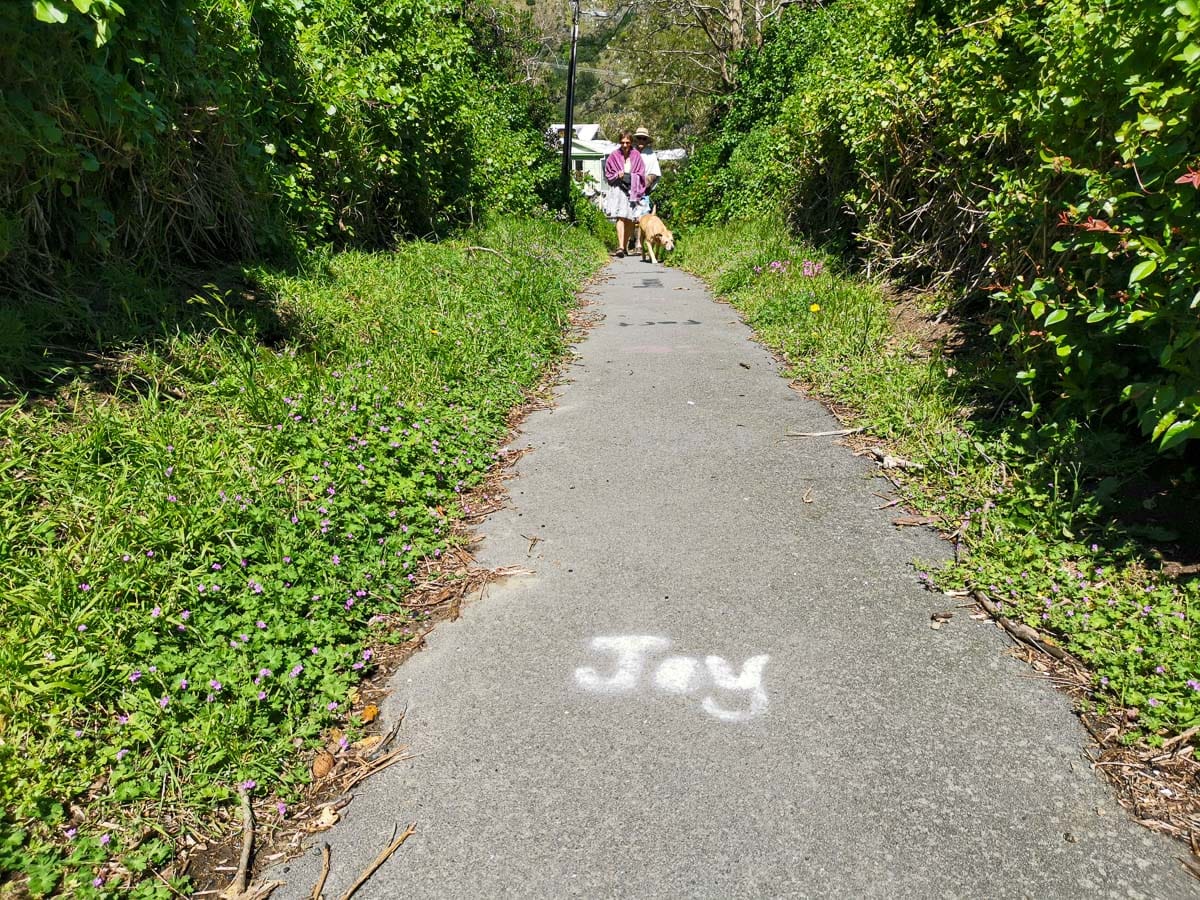 Photos: Mark Coote
Photos: Mark Coote
Paekākāriki has long been a magnet for artists and writers attracted by its retreat vibe and natural surroundings. Now you can enjoy a sample of creative work, while getting some gentle exercise.
In the heart of the village you’ll find a specially-designed walking route, the Paekākāriki Arts Walk, which showcases poetry and visual art by local people. It’s like a leisurely wander through a large gallery space, only outdoors with added extras like fresh air and views of hills and sea.
The trail is a short, mostly gentle walking loop that follows charming, scenic streets and a seaside path. Each waypoint features a poem or visual art piece, alongside a photo of the artist, a short biography of the person, and/or historical information.
Who it suits
The walking route is mostly very easy and can be enjoyed by people with varying fitness levels. It’s accessible for wheelchairs and prams as the route is almost all on footpaths. The track along the sea wall is a bit rockier, but you can take the footpath instead.
There’s one hill – the Sand Track, a short clamber up a pedestrian-only lane that turns into a narrow pathway for walkers. This is not so accessible for wheelchairs and prams – there are barriers at either end of the pathway. You’d need to head back to Beach Road and take Wellington Road instead, walking to the north.
How long it takes
The walk covers about 1.5 km. It’ll take anywhere from 30 minutes to an hour, depending on your pace. Stopping off to enjoy the views and beach is recommended if you have the time.

Highlights
More than 10 displays of locally-produced art and writing are this walk’s major attraction. The poets and artists are:
- Apirana Taylor
- Mercedes Webb-Pullman
- Ian McNeur
- J.C Sturm
- Emily Boonen
- The talented tamariki of Paekākāriki School, guided by Rachel Benefield
- Rob Hack
- Will Lawson
- Michael O’Leary
- John Daube
Don’t miss the opportunity to take in some local history. At the train station you can visit the Station Museum to find out more about the area’s fascinating, unique history. Two more railway station stop-offs to enjoy are the historic waiting room (open only in winter for commuters), and Kākāriki Books, a gem for rare literary finds.
Other highlights include views of the ocean and the dramatic Escarpment towering above the village.

Directions
The walk begins in the heart of the village, anywhere near the shops, and heads straight along Beach Road to the ocean, following the seaside walking path beside the Tasman Sea. After viewing Apirana Taylor’s poem Home, atop Murray Hill Point on the inner curve of Beach Road (right-hand side looking to the sea), carefully cross the road and follow the short downhill path to the wide seaside walkway adjacent to the Parade (see ‘Pearl and Florrie’s Way’, below).
After walking along the seaside path, look out for the sharp right turn up and over the pedestrian-friendly Sand Track. This turnoff is located just after viewing the Good Friday poem by J.C. Sturm. At the bottom of the Sand Track turn left, then immediately right into Cecil Road. The final stretch crosses Tilley Road, winds through the Station car park, then back along the Station platform (via the excellent Museum and bookshop) to the village’s ‘CBD’.

Pearl and Florrie’s Way
The path connecting Beach Road to the seawall walkway is named Pearl and Florrie’s Way, after two wonderful twins who had an unexpected tussle with an angry bull in Queen Elizabeth Park in 1996. Aged about 80 at the time, the spirited women held their own. Raumati South film-makers recreated the dramatic encounter in an animated short film, Pearl, Florrie and the Bull.
Facilities
Public toilets are conveniently located near the start of the walking trail on the Beach Road / Wellington Road corner.
Food and drink
Likewise, the cafes and pub are right there, to meet any refreshment needs at either end of the walk.
Tips
- Watch out for cars when you cross Wellington Road (after coming down the Sand Track) – this road is the busiest in the village and cars may travel fast down the hill.
- See the informative website dedicated to this walk and look out for further art additions to the trail.
- Paekākāriki Station Museum has a useful website with all kinds of historical information and photos

Read Good Friday by J.C Sturm and Paekākāriki Hill by Mercedes Webb-Pullman


